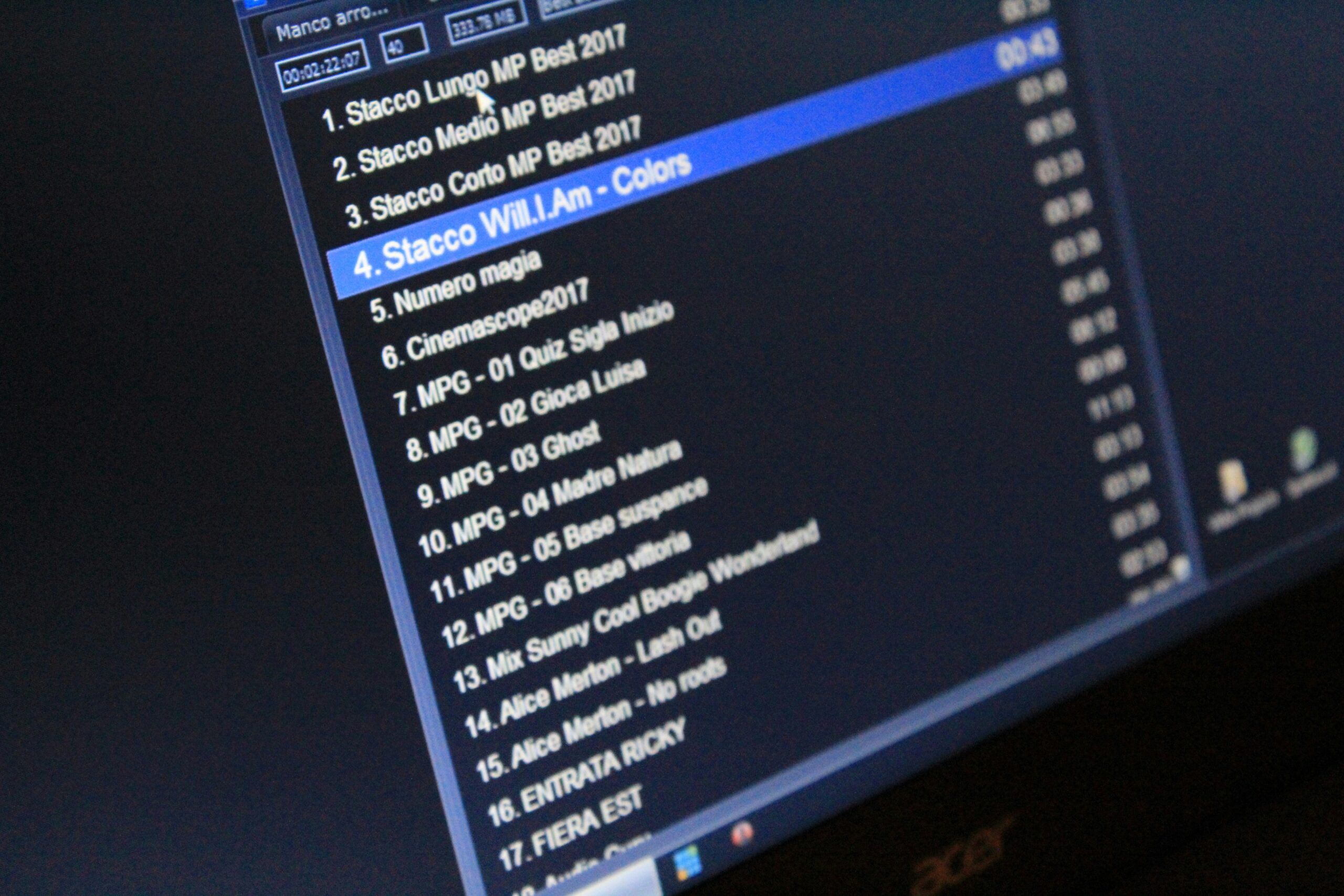Introduction to MOV and MP3 Formats
The MOV and MP3 file formats serve distinct purposes within the media landscape, each playing a vital role in their respective domains. MOV, developed by Apple, is a multimedia container format primarily used to store video and audio. Its use is prevalent in video editing and playback on Mac devices and other systems that support QuickTime. Users often encounter MOV files when dealing with high-quality video projects, as they enable the incorporation of multiple tracks of video, audio, subtitles, and effects in a single file. However, the size and complexity of MOV files can pose challenges for seamless sharing and playback across various devices and platforms.
On the other hand, MP3 is a widely adopted audio format that compresses sound data, significantly reducing file size without compromising much on perceived quality. This makes MP3 files ideal for streaming, downloading, and sharing music and other audio content. The compatibility of MP3 format with virtually all devices and media players has cemented its status as the go-to choice for audio enthusiasts. Users might seek to convert MOV files to MP3 format to extract audio tracks for easier storage, sharing, and playback across various platforms, enhancing their overall media experience.
Converting MOV to MP3 not only improves accessibility but also facilitates greater compatibility with handheld devices, allowing users to enjoy their favorite audio content on the go. As the demand for flexibility in media consumption continues to grow, understanding the distinctions between MOV and MP3 formats is crucial for seamless multimedia integration. With various MOV to MP3 converter tools available, users can effortlessly manage their audio and video assets, ensuring a smoother experience in accessing desired content.
Why Convert MOV to MP3?
In the realm of digital media, the need for versatility and compatibility is paramount. MOV files, originally developed by Apple, are widely used for video playback and editing. However, their compatibility across various devices and platforms may be limited, especially for users who seek to enjoy audio content without the accompanying video. This is where a MOV to MP3 converter becomes particularly beneficial.
One of the primary reasons users opt to convert MOV files to MP3 format is compatibility. MP3 is a universally accepted audio format supported by almost all media players and devices, including smartphones, tablets, and computers. This versatility allows users to listen to their favorite audio tracks extracted from MOV files without encountering playback issues, thereby enhancing the overall user experience.
Another significant advantage of converting MOV to MP3 is file size. Typically, MP3 files are much smaller than MOV files, making them easier to store and share. For individuals with limited storage capacity on their devices, this conversion can free up valuable space while maintaining audio quality. The more efficient file sizes also facilitate quicker uploads and downloads, which is particularly useful in environments with slow internet connections.
Moreover, converting MOV files to MP3 can serve practical purposes, such as audio extraction from video content. For instance, podcast creators, music enthusiasts, or educators may wish to derive the audio portion of a video for distribution or personal use. By utilizing a MOV to MP3 converter, users can effortlessly achieve this auditory extraction, ensuring the preservation of essential content while discarding unnecessary visual elements.
In summary, converting MOV files to MP3 format opens the door to enhanced compatibility, reduced file sizes, and the convenience of audio extraction, making this conversion process advantageous in various scenarios.
Understanding the Conversion Process
When converting MOV files to MP3 format, several technical factors come into play that determine the quality and efficiency of the resulting audio. The process primarily involves the use of audio encoding, which is the method of converting audio data from one format to another. The MOV file format, typically associated with Apple’s QuickTime, is known for encapsulating both video and audio streams, often using codecs designed for high fidelity. In contrast, MP3 is an audio-specific format that utilizes lossy compression algorithms to reduce file size while maintaining an acceptable level of sound quality.
The initial step in the conversion process involves decoding the audio stream from the MOV file. This is where codecs play a pivotal role; they are software entities responsible for encoding and decoding audio data. Common codecs for MOV files include AAC (Advanced Audio Codec) and PCM (Pulse Code Modulation). Upon extracting the audio content, the MOV to MP3 converter applies an appropriate encoder to transform the audio data into MP3 format. This is where bit rates come into consideration. Bit rate, expressed in kilobits per second (kbps), significantly affects the outcome of the audio quality. A higher bit rate typically results in better quality but larger file sizes, while lower bit rates decrease file size at the cost of audio fidelity.
After encoding, the finalized MP3 file is stored and ready for playback on a variety of devices. Throughout this entire process, maintaining the balance between file size and audio quality is crucial. Understanding these technical aspects not only demystifies the conversion but also equips users with knowledge to make informed decisions regarding their specific needs. Whether using an online converter or dedicated software, awareness of the underlying mechanics provides an edge in achieving the desired audio output.
Uploading MOV Files for Conversion
To begin the process of converting your MOV files to MP3, it is essential to first upload the files to the chosen conversion tool. Fortunately, most mov to mp3 converter platforms provide a variety of methods to make this process as smooth as possible. Here, we will outline the most common methods for file uploading.
The simplest method offered by many converter tools is the drag-and-drop feature. To utilize this option, users can locate their MOV files on their computer, click and hold the desired file, and then drag it over to the designated upload area on the converter’s webpage. Once the file is in position, releasing the mouse button will initiate the upload. This method is not only quick but also highly intuitive, making it a popular choice among users.
Additionally, users can upload MOV files by using the file selection option. Typically, this method involves clicking a button that reads “Upload” or “Select Files.” Upon clicking, a file dialog box will appear, allowing users to navigate through their file system. Users can then select one or multiple MOV files to upload. Once chosen, simply clicking “Open” will start the uploading process.
For those looking for an alternative method, some converter tools allow URL-based uploads. In this case, users can copy the URL link of the MOV file, perhaps sourced from a cloud storage service or any online platform where the file is hosted. After pasting the URL into the specified input box on the converter site, users can proceed to upload the file directly from the web.
By employing any of these methods, users can seamlessly upload their MOV files for conversion to MP3, paving the way for an efficient audio extraction experience.
Batch Conversion: Efficiency Meets Convenience
The need for efficient media conversion tools has become increasingly prominent, particularly for users who frequently handle multiple files. A reliable mov to mp3 converter equipped with batch conversion capabilities offers an ideal solution, enabling users to transform numerous MOV files into MP3 format simultaneously. This not only saves substantial time but also enhances productivity by minimizing repetitive tasks.
To initiate the batch conversion process, users typically start by selecting multiple MOV files within their chosen converter software. Most programs provide a straightforward interface where files can be added by either dragging and dropping or using a browsing option. Once the desired files are selected, users can easily view and confirm their selection before proceeding. This streamlined process ensures that users do not overlook any files, ultimately enhancing the efficiency of the operation.
After selecting the files, the next step involves configuring the output settings. This includes choosing the appropriate output format, which, in this case, is MP3. Users may also have the option to specify audio quality settings, conversion speed, and destination folders for the converted files. Advanced mov to mp3 converters often allow for further customization, enabling users to tailor their preferences on a file-by-file basis within the batch.
One of the significant advantages of utilizing batch conversion is the ability to maintain high-quality results throughout the process. Established converters optimize the conversion workflow to ensure that each file retains its audio fidelity, regardless of the number being processed. This focus on quality ensures a seamless transition from MOV to MP3 without compromising on sound clarity. Overall, batch conversion functionality in a mov to mp3 converter epitomizes the fusion of efficiency and convenience, catering to the needs of users seeking to streamline their audio conversion tasks.
Quality Assurance: Getting the Best Output
When converting files from MOV to MP3, one of the most crucial aspects to consider is audio quality. The process of conversion should not compromise the integrity of the audio. Therefore, maintaining sound quality while changing the file format is paramount. Choosing the right mov to mp3 converter is the first step toward achieving this goal, as not all converters are created equal. A good converter offers options for adjusting the output settings, including the bit rate.
The bit rate significantly affects both the size and quality of the output file. Higher bit rates generally result in better sound quality but also increase the file size. Common bit rates for MP3 files range from 96 kbps to 320 kbps. While a 320 kbps bitrate offers near-CD quality, a lower bitrate such as 128 kbps may suffice for casual listening and conserve storage space. Therefore, it is essential to find the right balance between audio quality and file size based on your specific needs and the intended use of the converted file.
Before selecting a bit rate, consider the type of audio and the listening environment. For example, if you plan to play the audio on high-quality speakers or headphones, opting for a higher bit rate would be beneficial. Conversely, for playback on mobile devices or in less-than-ideal settings, a lower bit rate might be acceptable. Additionally, some mov to mp3 converters provide features such as normalization and volume adjustments, which can further enhance your audio quality.
In summary, ensuring high-quality output in your MOV to MP3 conversion involves selecting an appropriate converter and making well-informed decisions regarding bit rates and audio settings. By carefully considering these factors, you can achieve excellent sound quality suited for your intended use.
Open Source vs. Custom Converters
When it comes to converting MOV files to MP3 format, users encounter a variety of converter options, primarily categorized into open-source and custom-built converters. Both types have their unique advantages and disadvantages, and understanding these can significantly influence the user’s choice based on specific needs.
Open-source MOV to MP3 converters are software applications that are freely available for modification and distribution. Popular examples include VLC Media Player and FFmpeg. One of the primary advantages of using open-source solutions is the zero-cost aspect, making them an attractive choice for users on a budget. These tools typically have strong community support, which often means regular updates and a wide array of features developed by users worldwide. However, the potential drawback lies in the user interface, which may not be as polished or user-friendly as commercial alternatives, possibly resulting in a steeper learning curve for non-technical users.
On the other hand, custom-built converters are specifically designed for particular use cases or user preferences. These proprietary applications often boast enhanced performance, ease of use, and advanced features that cater to professionals needing high-quality output. Moreover, commercial converters usually provide robust customer support and regular upgrades, ensuring the software remains functional and effective over time. However, these advantages often come with a significant cost, which may not be justifiable for casual users looking for basic conversion functionalities.
Ultimately, the choice between open-source and custom converters hinges on individual requirements. While those seeking cost-effective and adjustable options might prefer open-source solutions, users needing specialized features and support may favor custom-built converters. Evaluating the trade-offs between price and functionality is vital in determining the right MOV to MP3 converter for one’s specific needs.
Post-Conversion: Accessing and Using Your MP3 Files
Once you have completed your conversion using a MOV to MP3 converter, the next step is to access and manage your newly created MP3 files efficiently. Most online converters provide a direct download link immediately after the conversion process is finished. It is crucial to download the MP3 files to your device promptly to avoid any data loss or expiration of the temporary link.
After downloading, it is advisable to organize your files for easier access in the future. Create a dedicated folder for your audio that will contain all converted MP3 files. You might consider naming your files descriptively or including the original MOV file name, which can simplify identification later. Additionally, if you have a large collection of audio files, implementing a consistent naming convention can significantly aid your file management system.
Playing your newly converted MP3 files is straightforward, as the MP3 format is widely supported across various platforms and devices. You can utilize multimedia players such as VLC Media Player, Windows Media Player, or iTunes, all of which have robust support for MP3 playback. For mobile devices, popular applications like Spotify or Apple Music can facilitate easy listening, provided your device stores the audio files appropriately.
Moreover, transferring your MP3 files to portable devices can further enhance your listening experience. When using smartphones or tablets, you can either sync your audio library through iTunes or manually upload the MP3 files via USB connection. If your goal is to play these files within your car or on Bluetooth speakers, ensure that the audio formats are compatible and that any necessary apps are installed.
In conclusion, successfully accessing and utilizing your MP3 files post-conversion is quite manageable with the right procedures in place. By following the outlined steps for downloading, organizing, and playing your files, you will be able to enjoy your audio collection effortlessly.
Troubleshooting Common Conversion Issues
When converting MOV files to MP3 format, users may encounter several common conversion issues that can affect the usability and quality of the output files. Recognizing and addressing these problems promptly can facilitate a smoother and more effective conversion experience. One prevalent issue is file compatibility. MOV files may sometimes include codecs that are not supported by certain MOV to MP3 converters. To mitigate this, ensuring that the converter chosen supports a wide range of codecs is essential. Opting for a reliable and feature-rich converter can minimize compatibility-related headaches.
Another frequent challenge users face is conversion errors that can emerge during the process. These errors may arise from interrupted conversions, excessive file sizes, or inadequate processing power on the user’s device. To resolve this, users should verify their application settings and consider reducing the size or bit rate of the MOV file if problems persist. Additionally, rebooting the software or the device before starting the conversion can often rectify temporary glitches, leading to a successful MOV to MP3 conversion.
Moreover, quality degradation is a significant concern when converting MOV files to MP3 format. MP3, being a lossy format, tends to lose some audio quality during conversion. To preserve audio fidelity, users should select a higher bit rate during the conversion process. Most MOV to MP3 converters offer multiple options for output quality, so opting for a bit rate of 192 kbps or higher is advisable. Furthermore, conducting a test conversion of a small sample file can provide insights into the output quality before committing to larger files.
Overall, by being aware of these common issues and implementing the suggested solutions, users can significantly enhance their experience while converting MOV files to MP3 format.







